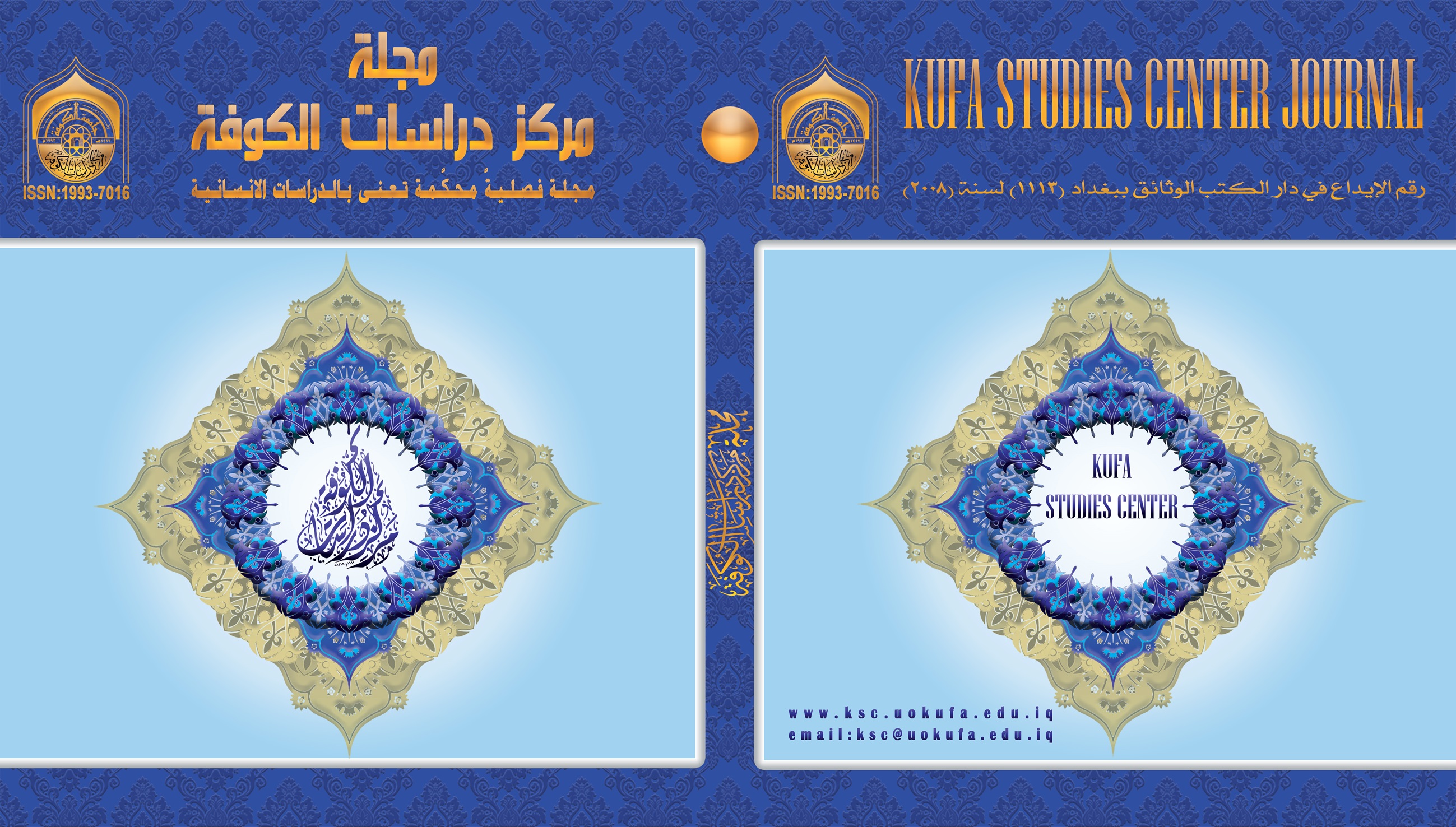Contemporary linguistic phenomena in the ancient Arabic linguistic heritage
DOI:
https://doi.org/10.36322/jksc.v1i71.15050Keywords:
Linguistic phenomena, linguistic heritage, contemporary linguistic phenomenaAbstract
The search came; To show the most important linguistic features addressed by Arab linguists, and whose contents agree with what contemporary linguistics has reached; In terms of their definition of the concept of language and its study according to the data of the descriptive approach, they investigated the most important linguistic phenomena at the phonological, morphological, syntactic, lexical, and semantic levels, language learning and acquisition, and studied the relationship of pronunciation to meaning, sign, the arbitrariness of the sign, and the relationship of language to society.
The research started from the problem of investigating the ancient Arabic linguistic heritage’s treatment of linguistic phenomena, in light of the findings of contemporary Western linguistics
Downloads
References
) ينظر :مبادئ الألسنية، أحمد محمد قدور/6.
) ينظر: النظرية اللغوية العربية الحديثة، جعفر دكّ الباب/35.
) ينظر: من أسرار اللغة، ابراهيم أنيس/16.
) ينظر: دور الكلمة في اللغة، ستيفن أولمان، – ترجمة: كمال بشر/ 23، ونظريات في اللغة، أنيس فريحة/7.
) ينظر: مبادئ ألسنية عامة ،اندريه مارتينه/8.
) ينظر: النظرية الألسنية عند رومان جاكبسون، فاطمة بركة الطبّال/15.
) ينظر: أضواء على الدراسات اللغوية المعاصرة، نايف حزما /12.
) ينظر: البنيوية وما بعدها، جون ستروك /12.
) ينظر: اللغة العربية عبر القرون ،محمود حجازي/10.
) ينظر: اللغة العربية المعاصرة، محمد كامل حسين/23.
) ينظر: اللغة العربية معناها ومبناها، تمام حسان/20.
) ينظر: كتاب العين، الخليل بن أحمد الفراهيدي/3(المقدمة).
) ينظر: البيان والتبين، الجاحظ:1/55.
) ينظر: بحوث ومقالات في اللغة، رمضان عبد التوّاب/17.
) ينظر: الخليل وكتاب العين، هادي حسن حمودي/11، أصالة علم الأصوات عند الخليل من خلال مقدمة كتاب العين، أحمد محمد قدور /30.
) ينظر: النظرية الألسنية عند رومان جاكبسون /8.
) العقد هو الحساب من دون اللفظ والخط.
) النصبة هي "معنى بغير لفظ ، وجسم من دون روح.
) ينظر: الاسلوبية والاسلوب، عبد السلام المسدي/15.
) في مقاله المنشور في حوليات الجامعة التونسية عدد 13 ص152.
) الألسنية العربية ، ريمون طحان:1/43، وينظر: قاموس اللسانيات، عبد السلام المسدّي:6.
) ينظر: العرب وعصر المعلومات، نبيل علي/11.
See: Principles of Linguistics, Ahmed Muhammad Kaddour/6.
See: Modern Arabic Linguistic Theory, Ja'far Dak al-Bab/35.
See: From the secrets of language, Ibrahim Anis/16.
See: The Role of the Word in Language, Stephen Ullman, translated by: Kamal Bishr/23, and Theories in Language, Anis Freiha/7.
See: General Principles of Linguistics, Andre Martin/8.
See: Roman Jacobson's Linguistics Theory, Fatima Baraka al-Tabbal/15.
See: Lights on Contemporary Linguistic Studies, Nayef Hizma / 12.
See: Structuralism and Beyond, John Stroke/12.
See: Arabic Language through the Centuries, Mahmoud Hijazi/10.
See: Contemporary Arabic, Muhammad Kamel Hussein/23.
See: The Arabic Language: Its Meaning and Structure, Tammam Hassan/20.
See: Kitab al-'Ain, al-Khalil ibn Ahmad al-Farahidi/3 (Introduction).
See: Al-Bayan wal-Tabin, Al-Jahiz, 1/55.
See: Researches and Articles in Language, Ramadan Abdel Tawab/17.
See: Al-Khalil and the Book of the Eye, Hadi Hassan Hammoudi/11, The Authenticity of Phonetics in Hebron through the Introduction to the Book of Al-Ain, Ahmed Muhammad Kaddour/30.
See: Roman Jacobson's Linguistics Theory /8.
) The contract is the calculation without the word and line.
) Nisaba is "meaning without verbal, and a body without a soul.
See: Stylistics and Style, Abd al-Salam al-Masadi/15.
) in his article published in the Annals of the Tunisian University No. 13, p. 152.
Arabic Linguistics, Raymond Tahhan: 1/43, see: Dictionary of Linguistics, Abd al-Salam al-Masadi: 6.
See: Arabs and the Information Age, Nabil Ali/11.
Downloads
Published
How to Cite
Issue
Section
License
Copyright (c) 2024 أ.م. حوراء مهدي عبد الصاحب الكوفي

This work is licensed under a Creative Commons Attribution 4.0 International License.
Permit others to distribute and copy the manuscript, to create extracts, abstracts, and other revised versions, adaptations, or derivative works of or from the manuscript (such as a translation), to include in a collective work, to text or data mine the article, even for commercial purposes, as long as they credit the author(s), do not represent the author as endorsing their adaptation of the article, and do not modify the article in such a way as to damage the author''''s honor or reputation. Further details are found at Creative Commons Attribution 4.0 International (CC BY 4.0)






























